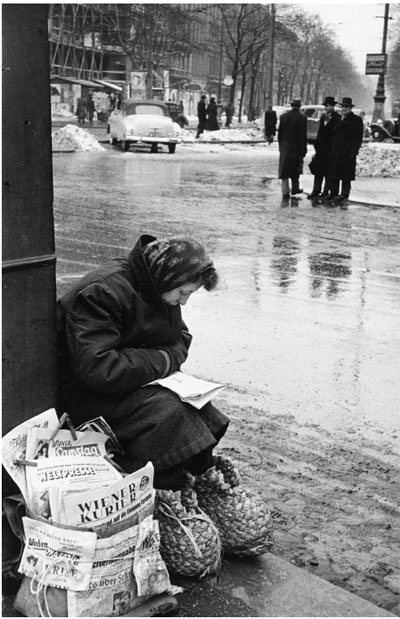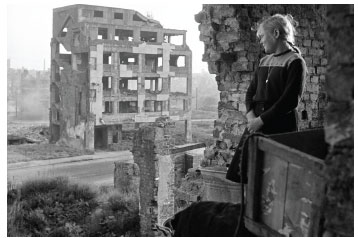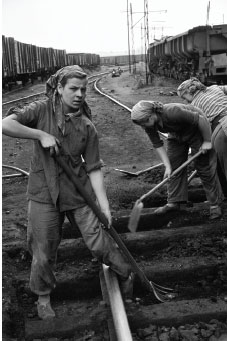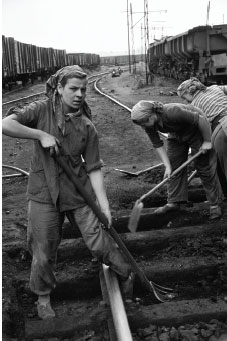Of rubble and refugee
Updated: 2015-12-11 07:56
(HK Edition)
|
|||||||||
Erich Lessing's photographs of Europe in the aftermath of World War II are on show at University Museum and Art Gallery, HKU. Paul Surtees reviews.
A selection of striking photographs by Erich Lessing is showing at the University of Hong Kong's (HKU) Museum and Art Gallery. This famous Austrian press photographer (born in Vienna in 1923) was at the top of his profession back in the 1950s and 1960s. This is the first showing of his work in Hong Kong.
Titled "The Pulse of Time, Capturing Social Change in Post-War Europe", the exhibition includes stark images of widespread physical destruction caused by bombing during the war years. The rubble remained in certain parts of Western European cities years after World War II was over.
Views of ordinary people struggling as refugees also shown in this selection remind us of today's waves of refugees. Lessing had a natural empathy for the plight of refugees, having been a Jewish refugee himself. At 15, he fled to Palestine, returning to Austria in 1949. Both his mother and grandmother, who had stayed back, had meanwhile been killed by the Nazis.
His daughter, Hannah Lessing, came all the way from Austria to inaugurate the exhibition. In a heartfelt address, she outlined her father's skill at capturing history as it happens. She said the photographs have become "visual monuments" to the human struggles of that distant and difficult age.
Florian Knothe, director of University Museum and Art Gallery at HKU, said that "Lessing was an early photojournalist who told a story in images - unedited photos - rather than merely using images to illustrate a text."
Portraits of some of the national leaders of that age, including Zhou Enlai, generals de Gaulle and Eisenhower, Willy Brandt, Golda Meir, Nikita Khrushchev and Anthony Eden are also on show.
The themes are quite diverse. There is a shot of a bar mitzvah celebration in Krakow in 1956; an image from a Soviet sock factory; and one taken at a ball in Vienna Opera House. There are also pictures of peasants at an outdoor mass; leaders at international political conferences; artists at work in Central Europe; views of bombed-out townscapes; ballet rehearsals; women miners and a delightful one of Maurice Chevalier singing on a street in Paris.
The Austrian Consul-General in Hong Kong and Macao, Claudia Reinprecht, said at the opening that Erich Lessing indeed had a special knack for capturing drama on film. As she observed, "During the early years of the long-running Cold War, he captured many of the vivid upheavals of historic magnitude then taking place in Europe." Those scenes have parallels to today's mass migrations, making these images from history both poignant and relevant today.
|
A frozen newspaper vendor in Vienna , 1953. Photos provided by Erich Lessing/ Lessingimages.com |
|
Fallen Soviet soldier (covered with lime) in Budapest, 1956. |
|
A young resident in the ruins of Dusseldorf, 1951. |
|
Hungarian peasant women at an outdoor mass in Hungary, 1956. |
|
Women doing repairs at the Plant Railway, 1956. |
|
|

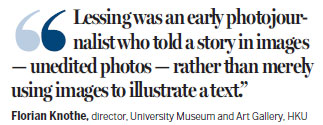
|
Traffic check at the Brandenburg Gate, 1959 (before the Berlin Wall was built). |

(HK Edition 12/11/2015 page11)
